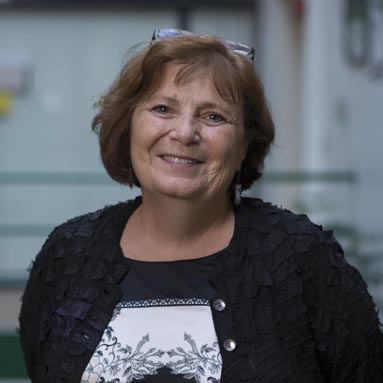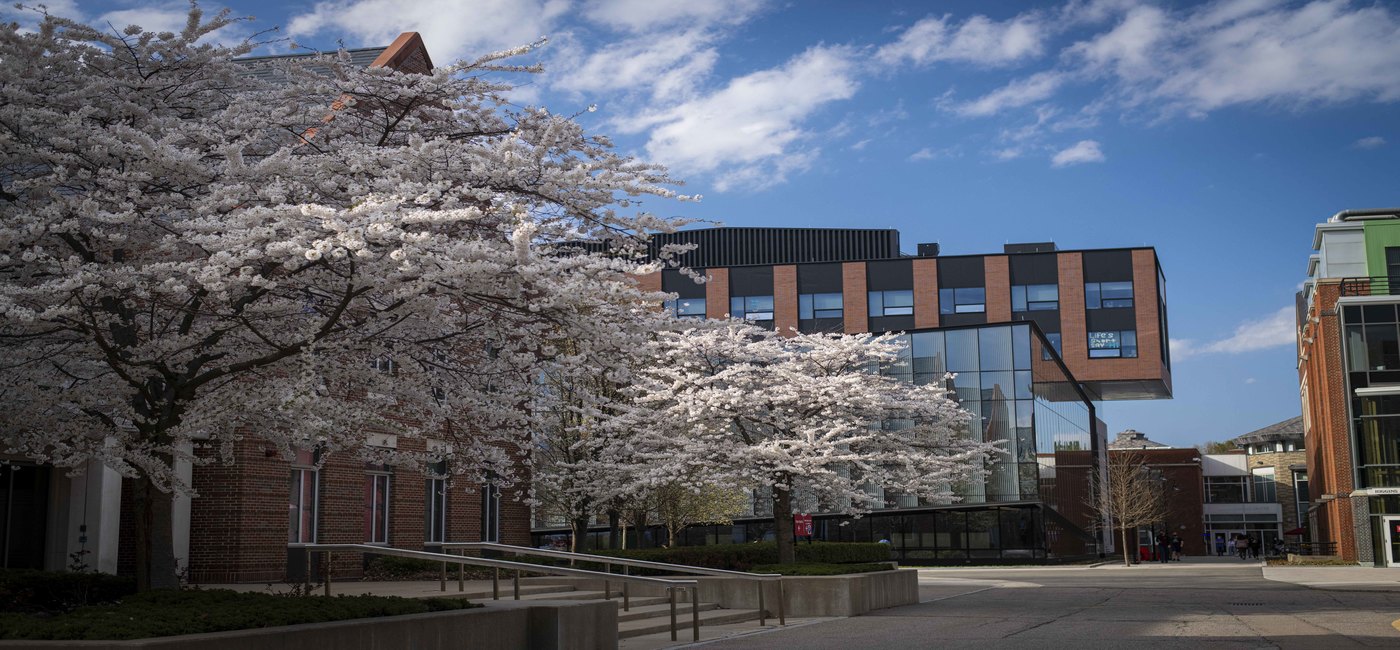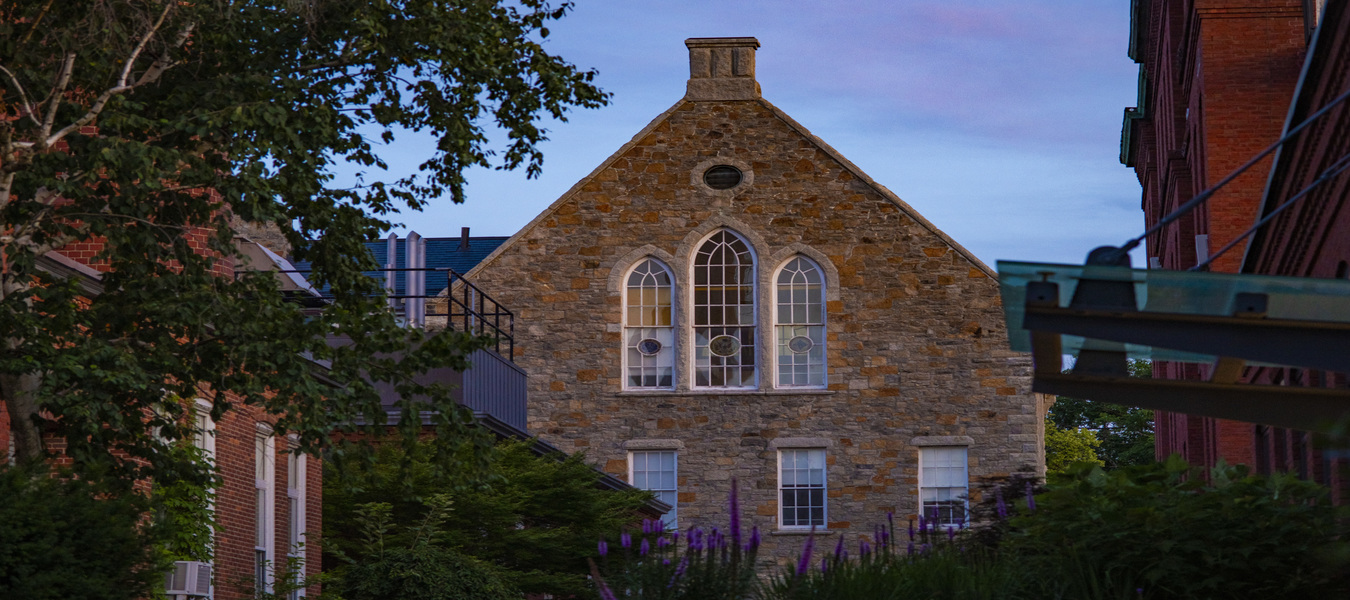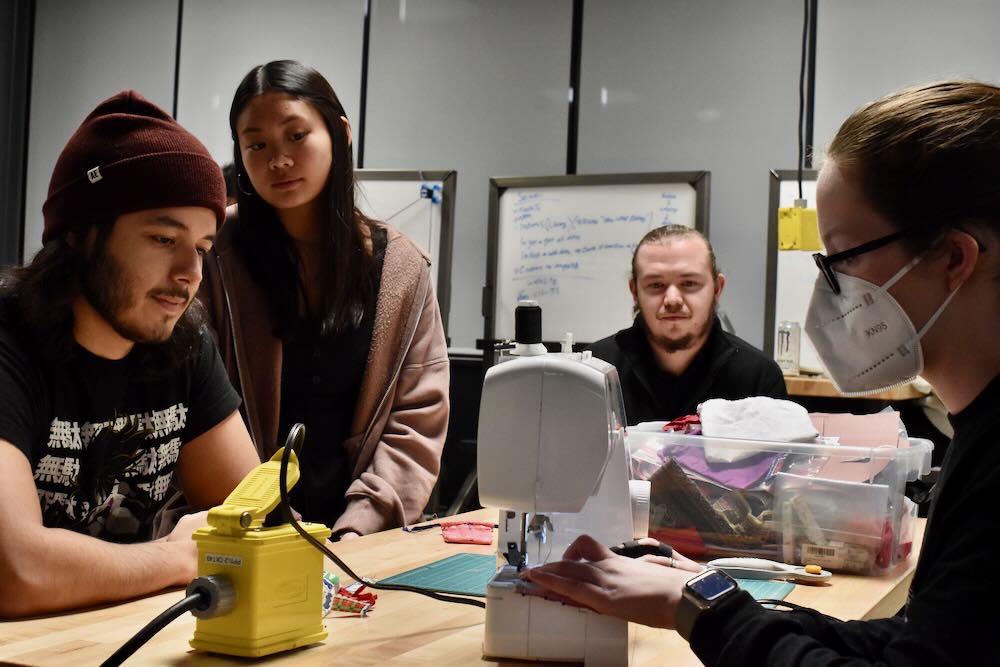In October, Karen Kashmanian Oates, dean of arts and sciences and professor of biochemistry, spoke at the University of Dayton about “Creating the Environment for Innovation.”
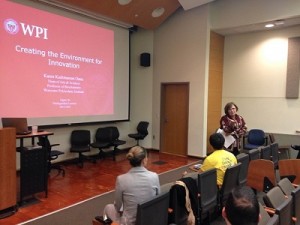
Karen Kashmanian Oates
Her presentation focused on how a new model based on the science of learning and innovation principles can foster a new ecosystem in the university classroom, too often mired in traditional pedagogical techniques.
By understanding the necessary environmental factors that both encourage and discourage innovation, educators can shift from a passive, rigid approach to an active, creative atmosphere where ideas can flourish.
The sweet spot of innovation in the university, says Oates, occurs at the point where innovative practices based on diverse perspectives and partnerships, market needs, and research about learning overlap.
At that spot, students develop a sense of competence, a willingness to take risks and the belief that what they are learning is relevant to their own lives as well as to the larger world.
Oates’s speech grew out of her selection as a Sigma Xi Distinguished Lecturer for 2015–2016. Every other year since 1937, the renowned international honor society has singled out a small number of outstanding scholars for this honor. Sigma Xi chapters choose speakers from the list to visit their campuses.
Dean Oates was the inaugural speaker at the University of Dayton’s new science building; the university plans a series of distinguished lectures this year to celebrate its opening.
Her examination of innovation in education emerged at George Mason University, where she taught in the Biology Department. She and a colleague from the English Department were asked by the provost to explore the ways in which other colleges and universities were using research about how people learn in order to create new curricula.
“Our goal was to see how we use evidence to teach,” she says. “We use it in research and when we make decisions about what we purchase, we use it for everything. But when it comes to teaching, we know that classrooms don’t use the necessary methods for deep understanding—especially in the sciences.”
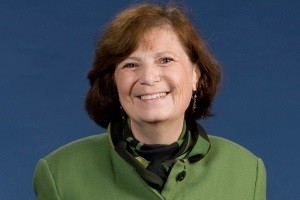
Karen Kashmanian Oates
They spent a year exploring, returning with suggestions for how George Mason could incorporate new ideas and approaches. Instead, the university created an entirely new college, with new graduation requirements.
“They liked our ideas so much that they said, ‘It doesn’t fit into what we do; we don’t actually use evidence at all,’” she recalls.
Her involvement in that project propelled her in 2003 to Pennsylvania, where she became provost of Harrisburg University of Science and Technology, a brand new university geared to inner city students.
“Using the old ways of learning for kids who came from areas without the best high schools was not the right approach,” she says. “It wasn’t going to work. We had to be a lot more innovative in what we were doing.”
In 2007 the National Science Foundation brought Oates in to serve as Deputy Director of Education, where she “supported learning at the undergraduate level in all of the sciences and engineering.”
She came to WPI five years ago, attracted in large part because of the incorporation of project-based learning into the curriculum.
APPLYING SCIENCE TO THINGS THAT MATTER
“The idea that faculty are able to utilize units rather than semesters for learning was very interesting,” she says. “We [at WPI] spend a great deal of time making sure that students get the proper humanities and social science background to be able to apply their science to things that really matter. It isn’t learning for the sake of engineering or science but in order to apply it to large global problems as well. We teach them a lifelong approach to learning.”
She contrasts WPI’s forward thinking with the stale approaches of many small liberal arts colleges that continue to use a 40-year-old model that no longer applies.
Noting that institutions must be “nimble” in adapting, she stresses that “we know things to do” to help students become innovative. Choice and free will are critical to their feeling empowered by their education, she says, and they learn material much better if they can see the relevance to their own lives.
And learning how students learn is the faculty’s obligation, Oates says.
“I learn very differently from my students,” she says. She likes to read and to listen, to sequester herself in a quiet library carrel.
“However, as a teacher, it’s not about how I learn, it’s about how my students learn. I have to learn how they learn before I can be a good teacher.”
It is, then, the responsibility of the university as a whole to pay attention to evolving research about motivation theory, critical thinking skills, and the best practices for encouraging innovation. And it is the responsibility of the deans “to keep evidence-based learning front and center for the faculty,” she says.
“Or,” she adds, “you don’t have to change; extinction is always a possibility.”
– BY LAURA PORTER
